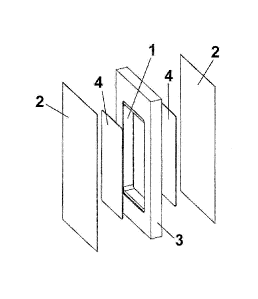Some of the information on this Web page has been provided by external sources. The Government of Canada is not responsible for the accuracy, reliability or currency of the information supplied by external sources. Users wishing to rely upon this information should consult directly with the source of the information. Content provided by external sources is not subject to official languages, privacy and accessibility requirements.
Any discrepancies in the text and image of the Claims and Abstract are due to differing posting times. Text of the Claims and Abstract are posted:
| (12) Patent: | (11) CA 2938452 |
|---|---|
| (54) English Title: | DEVICE FOR EVAPORATING VOLATILE SUBSTANCES |
| (54) French Title: | DISPOSITIF D'EVAPORATION DE SUBSTANCES VOLATILES |
| Status: | Granted |
| (51) International Patent Classification (IPC): |
|
|---|---|
| (72) Inventors : |
|
| (73) Owners : |
|
| (71) Applicants : |
|
| (74) Agent: | PRIMA IP |
| (74) Associate agent: | |
| (45) Issued: | 2020-08-18 |
| (86) PCT Filing Date: | 2015-02-11 |
| (87) Open to Public Inspection: | 2015-08-20 |
| Examination requested: | 2019-02-05 |
| Availability of licence: | N/A |
| (25) Language of filing: | English |
| Patent Cooperation Treaty (PCT): | Yes |
|---|---|
| (86) PCT Filing Number: | PCT/ES2015/070087 |
| (87) International Publication Number: | WO2015/121522 |
| (85) National Entry: | 2016-08-01 |
| (30) Application Priority Data: | ||||||
|---|---|---|---|---|---|---|
|
The invention relates to a device for evaporating volatile substances, comprising a container (1) for a liquid which contains the volatile substances and means (2) for evaporating the volatile substances. Said device is characterised in that said means for evaporating the volatile substances comprise two semi-permeable membranes (2). The device allows the optimisation of the evaporation of the volatile substances present in the liquid, doubling the evaporation surface thereof compared to conventional devices, and increases the perception of the liquid evaporated by the user.
L'invention concerne un dispositif d'évaporation de substances volatiles qui comprend un récipient (1) conçu pour recevoir un liquide qui contient les substances volatiles et des moyens (2) pour faire s'évaporer les substances volatiles ; le dispositif étant caractérisé en ce que lesdits moyens pour l'évaporation des substances volatiles comprennent deux membranes semi-perméables (2). Le dispositif de l'invention permet d'optimiser l'évaporation des substances volatiles présentes dans le liquide, par duplication de la surface d'évaporation par rapport aux dispositifs classiques, et augmente la perception du liquide évaporé par l'utilisateur.
Note: Claims are shown in the official language in which they were submitted.
Note: Descriptions are shown in the official language in which they were submitted.

For a clearer understanding of the status of the application/patent presented on this page, the site Disclaimer , as well as the definitions for Patent , Administrative Status , Maintenance Fee and Payment History should be consulted.
| Title | Date |
|---|---|
| Forecasted Issue Date | 2020-08-18 |
| (86) PCT Filing Date | 2015-02-11 |
| (87) PCT Publication Date | 2015-08-20 |
| (85) National Entry | 2016-08-01 |
| Examination Requested | 2019-02-05 |
| (45) Issued | 2020-08-18 |
There is no abandonment history.
Last Payment of $277.00 was received on 2024-02-09
Upcoming maintenance fee amounts
| Description | Date | Amount |
|---|---|---|
| Next Payment if standard fee | 2025-02-11 | $347.00 |
| Next Payment if small entity fee | 2025-02-11 | $125.00 |
Note : If the full payment has not been received on or before the date indicated, a further fee may be required which may be one of the following
Patent fees are adjusted on the 1st of January every year. The amounts above are the current amounts if received by December 31 of the current year.
Please refer to the CIPO
Patent Fees
web page to see all current fee amounts.
| Fee Type | Anniversary Year | Due Date | Amount Paid | Paid Date |
|---|---|---|---|---|
| Application Fee | $400.00 | 2016-08-01 | ||
| Registration of a document - section 124 | $100.00 | 2016-10-12 | ||
| Maintenance Fee - Application - New Act | 2 | 2017-02-13 | $100.00 | 2017-01-20 |
| Maintenance Fee - Application - New Act | 3 | 2018-02-12 | $100.00 | 2018-01-30 |
| Request for Examination | $800.00 | 2019-02-05 | ||
| Maintenance Fee - Application - New Act | 4 | 2019-02-11 | $100.00 | 2019-02-05 |
| Maintenance Fee - Application - New Act | 5 | 2020-02-11 | $200.00 | 2020-02-10 |
| Final Fee | 2020-08-24 | $300.00 | 2020-06-03 | |
| Maintenance Fee - Patent - New Act | 6 | 2021-02-11 | $204.00 | 2021-02-09 |
| Maintenance Fee - Patent - New Act | 7 | 2022-02-11 | $203.59 | 2022-01-25 |
| Maintenance Fee - Patent - New Act | 8 | 2023-02-13 | $210.51 | 2023-01-27 |
| Maintenance Fee - Patent - New Act | 9 | 2024-02-12 | $277.00 | 2024-02-09 |
Note: Records showing the ownership history in alphabetical order.
| Current Owners on Record |
|---|
| ZOBELE ESPANA, S.A. |
| Past Owners on Record |
|---|
| None |